How To Stop A Leaking Pipe With Water In It
Stop Leaks in Plumbing Joints
Foolproof methods for connecting valves, faucets and sinks, and drain parts.
Introduction
The best fourth dimension to fix a plumbing leak is before it happens, by properly connecting water supply and waste material line fittings. Acquire the tricks that pros use to make leakproof connections.
Tools Required
Materials Required
- Flexible supply tubes
- Teflon pipe articulation compound
- Teflon tape
Projection step-by-footstep (xi)
Step 1
Apply two types of Teflon pipe articulation chemical compound on threaded joints
Wrap threads with plumbers record
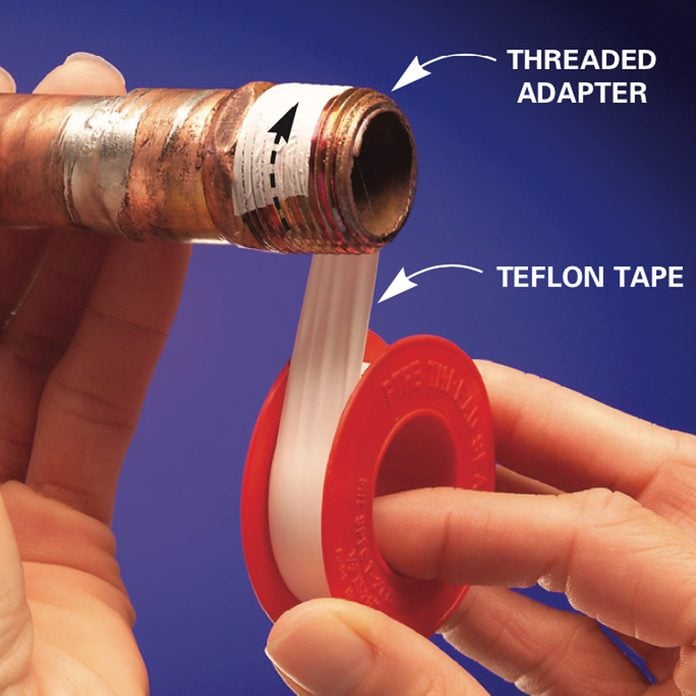
Wrap the plumbers tape around the pipe clockwise.
How to Prepare a Dripping Shower
Step 3
Tighten the connection
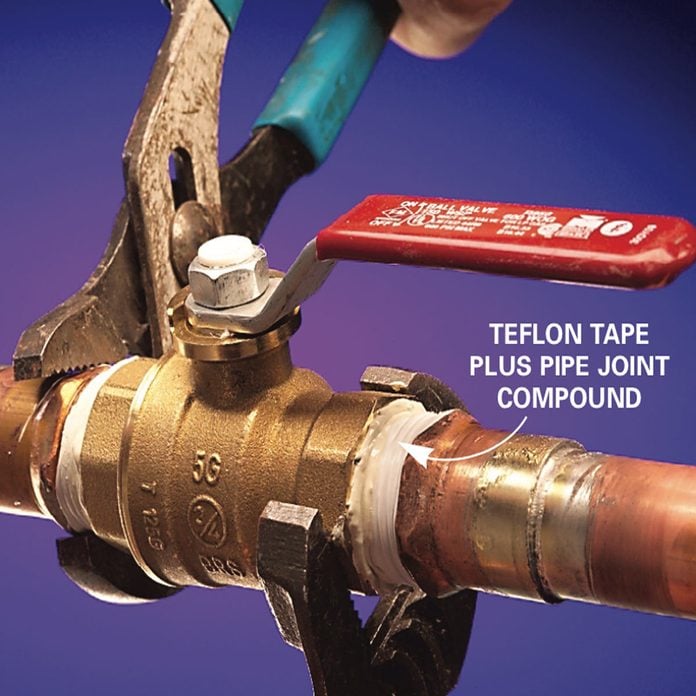
Using two wrenches, tighten the connexion over the articulation compound and plumbers tape.
Why use plumbers record and pipe joint chemical compound
Connections that rely on threaded pipes and fittings are prone to leaks if they're not sealed with either Teflon tape or Teflon pipe joint chemical compound. Careful plumbers employ both piping joint chemical compound and teflon on every joint for extra security. They don't want to come up back.
Start by wrapping the male threads with Teflon record (Photograph 1). With the terminate of the threaded pipage facing you as shown, wrap the plumbers tape clockwise. Usually 3 layers is enough. In one case in a while, you'll run across a loose plumbing equipment that requires iv or five wraps. Stretch and tear the record to complete the wrap.
Spread a thin layer of Teflon pipe joint compound over the record (Photo 2). If you're working with plastic pipage, choose Teflon piping joint chemical compound that's compatible with it. So get-go the threads past hand before tightening the connectedness with wrenches (Photo 3). Wipe away the excess pipage articulation compound.
Well Pump Troubleshooting and DIY Repair
Footstep 4
Lubricate the ferrule on compression joints
Wipe pipe joint chemical compound
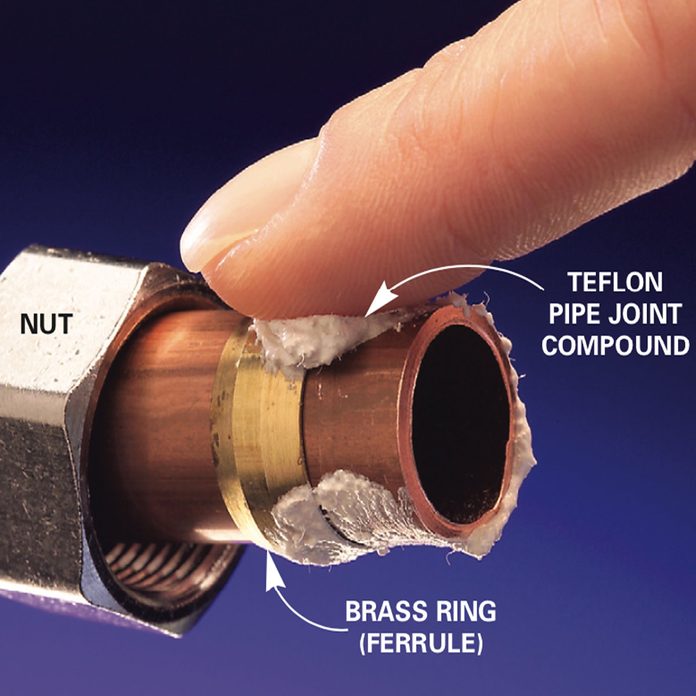
Lubricate the ferrule and brass band with piping articulation compound.
Handy Plumbing Tips and Tricks
Footstep half dozen
Tighten the plumbing equipment
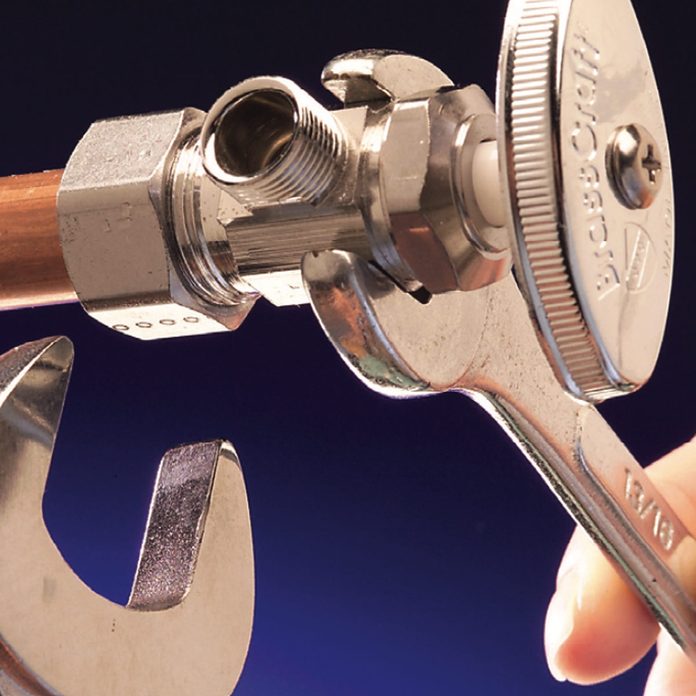
Tighten the compression fitting. The pipe joint compound provides a greater margin of safety. Compression joints are near mutual on shutoff valves, although you find them on other fittings as well. They have a brass or plastic ring (ferrule) that's compressed into a recess when you tighten the nut, forming a seal. Lubricating the piping and the ferrule with a flake of Teflon pipage joint compound (Photo 1) helps the ferrule slide along the pipe and squeeze tightly into the recessed fitting with less wrench pressure (Photograph ii). Tighten compression fittings firmly with two wrenches to crimp the ferrule onto the pipage (Photo 3). Also brand sure the pipe or tube goes straight into the plumbing fixtures. Misalignment volition cause a leak. If the fitting leaks after you lot turn on the water, try tightening the nut an additional one-quarter plow. This usually stops the leak.
Step 8
Get together and align
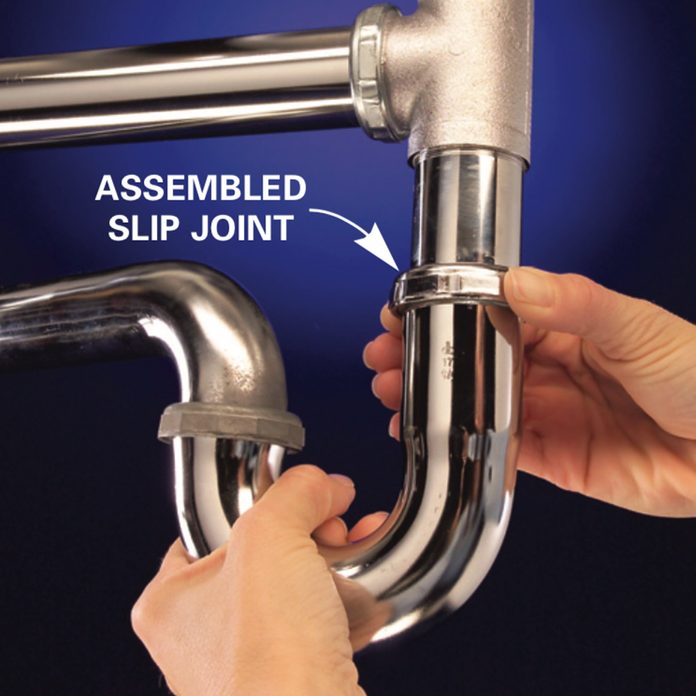
Hand-tighten all the joints, and so align and lock the pipes in position with a skid joint pliers
Joints on chrome trap assemblies rely on rubber slip articulation washers for the seal, which oftentimes leak. If y'all're reassembling a chrome trap, purchase new sideslip articulation washers and nuts. However, new washers sometimes stick to the piping, causing them to twist or distort every bit you push them tight with the slip joint nut. To avoid this, lubricate the bleed tubing and slip articulation with a lilliputian pipe joint chemical compound (Photo one). The compound helps the washer slide smoothly and creates a tighter seal.
Start the skid joint nut by hand, and twist it on until the threads are engaged correctly. Paw-tighten all joints commencement (Photograph ii). Then adjust the trap parts until they're aligned and pitched slightly for drainage. This is central; a misaligned joint volition leak, even with new washers. Finally, utilise a big skid joint pliers to tighten the nuts an additional half turn.
Plastic trap parts utilise hard plastic slip joint washers for a seal. Make sure the flat office is against the nut with the tapered side facing the fitting.
12 Things Your Plumber Doesn't Desire You lot To Know
Footstep nine
Cull flexible supply tubes
Solid copper supply lines
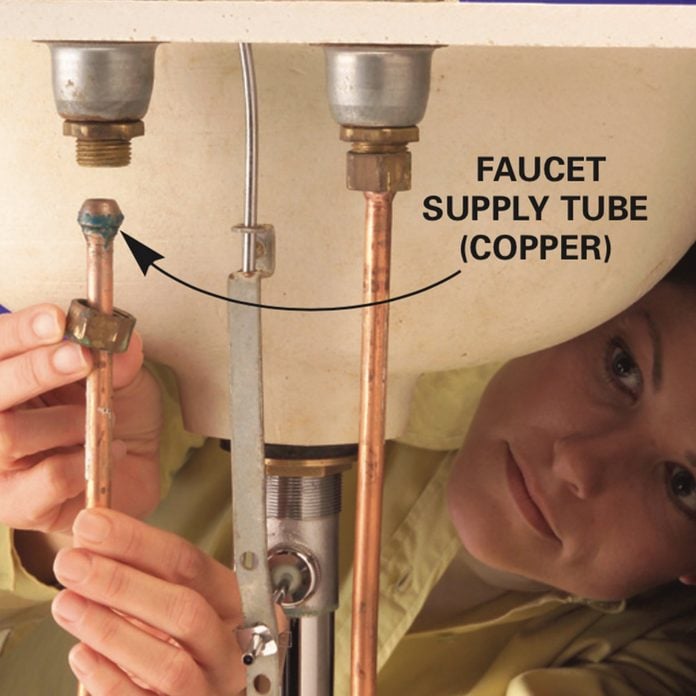
Avoid solid copper or chrome supply lines. They're difficult to get correct unless you lot've had lots of feel with them.
12 Things Your Plumber Wants You To Know
Footstep xi
Close-up of gasket
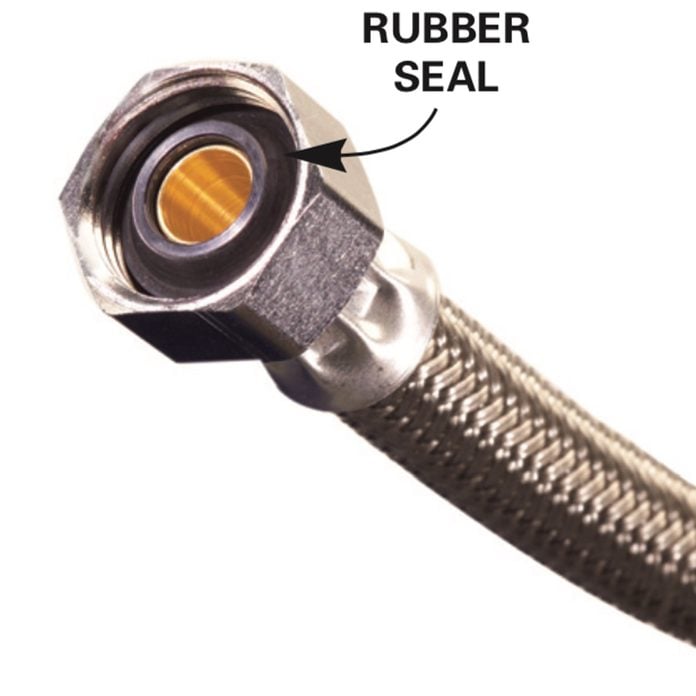
Flexible supply lines utilise rubber gaskets to seal the connections, and usually just need manus-tightening plus one-half a turn with a wrench
The skinny copper or chrome supply tubes used to connect faucets and toilets (Photo 1) are tricky to cut, bend and align. But you don't take to put upwards with them. When you're replacing a faucet or toilet, use flexible supply hoses with a braided covering instead (Photograph 2). They have rubber gaskets at each cease and don't crave much forcefulness to seal. They're available in many lengths and are flexible enough to fit nearly any configuration. The only flim-flam is buying a connector with the correct size nuts on the ends. Accept your sometime tubing and the nuts on each terminate forth with you lot to the store to exist sure of an exact match.
Outset the nuts advisedly and hand-tighten. Then tighten an additional half turn (Photo 2). Avoid overtightening. It's easy to tighten the basics a footling more if the joint leaks.
Find and Repair Hidden Plumbing Leaks
Originally Published: March 21, 2019
How To Stop A Leaking Pipe With Water In It,
Source: https://www.familyhandyman.com/project/stop-leaks-in-plumbing-joints/
Posted by: davisstectint.blogspot.com


0 Response to "How To Stop A Leaking Pipe With Water In It"
Post a Comment